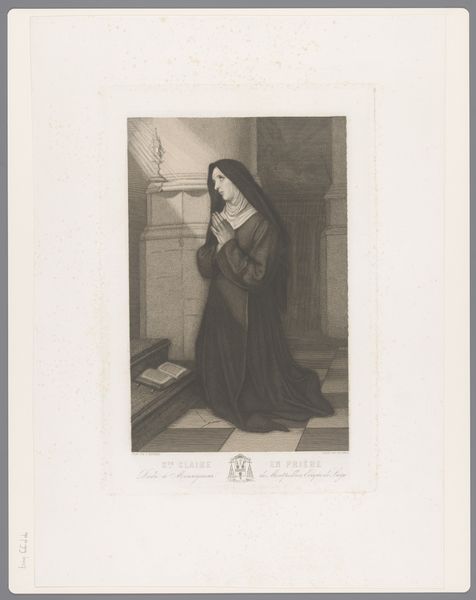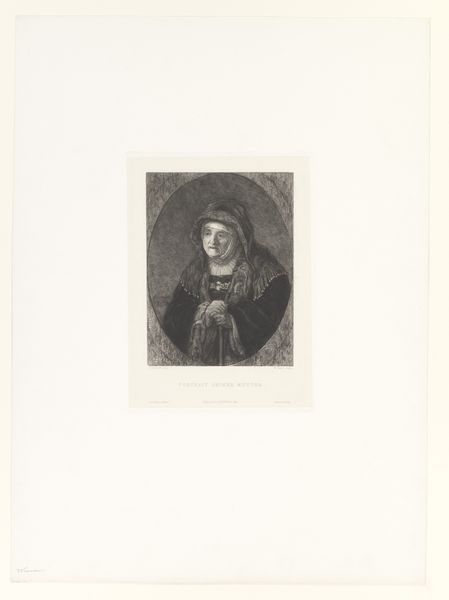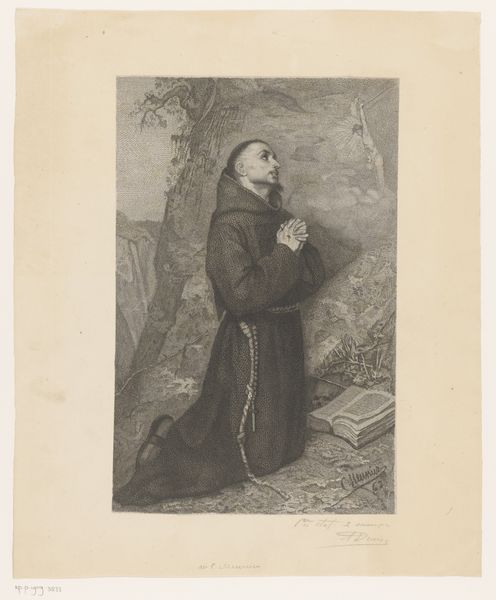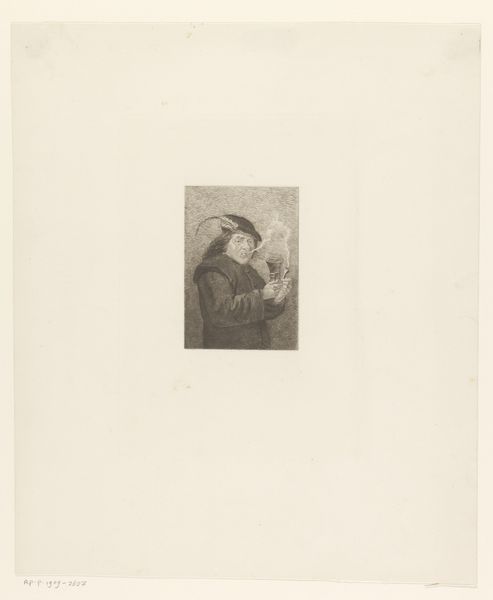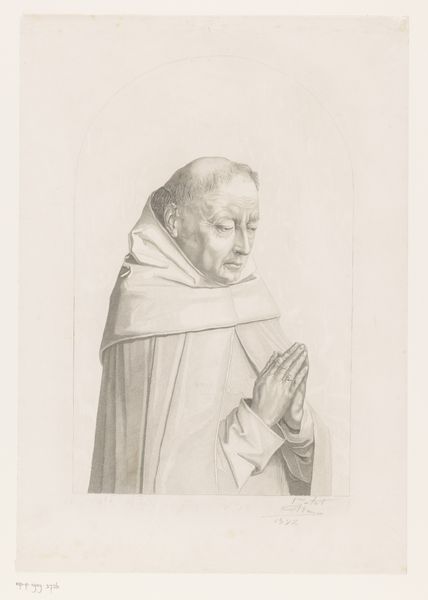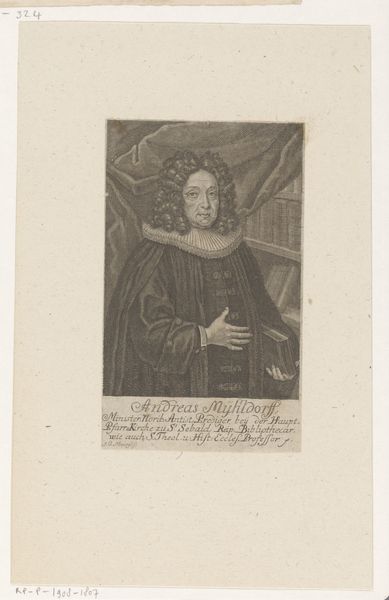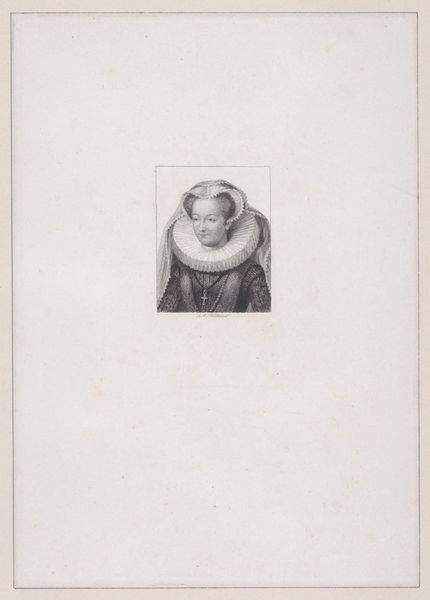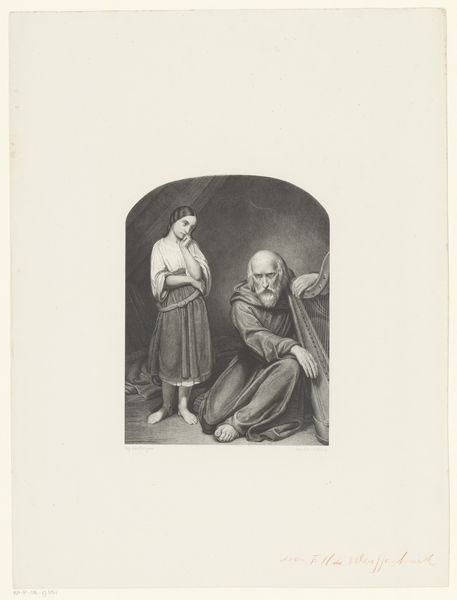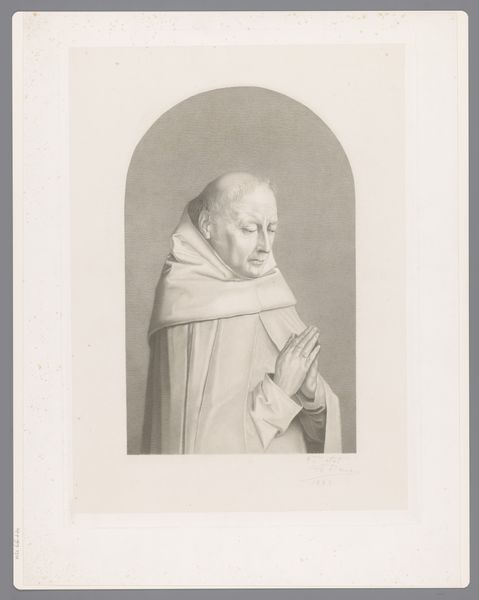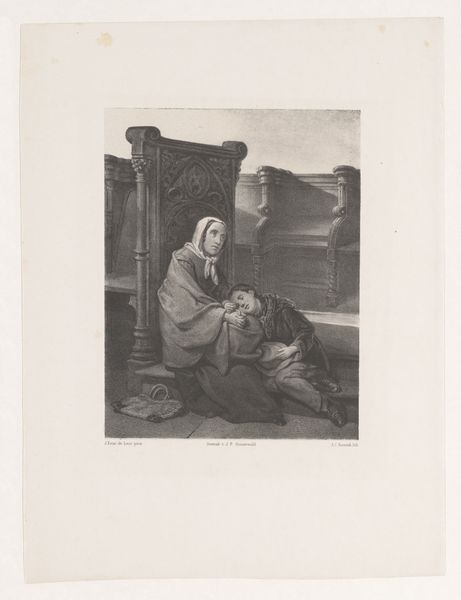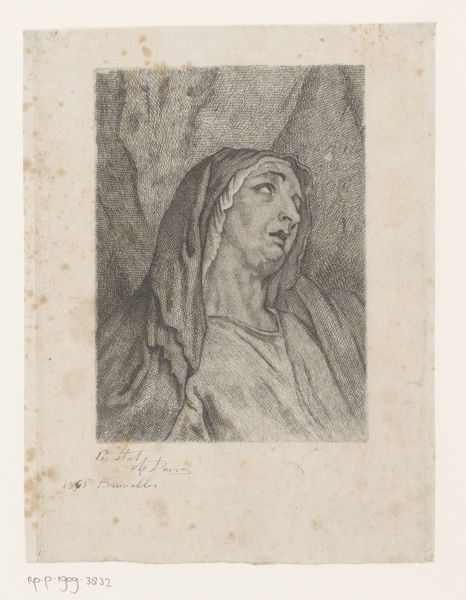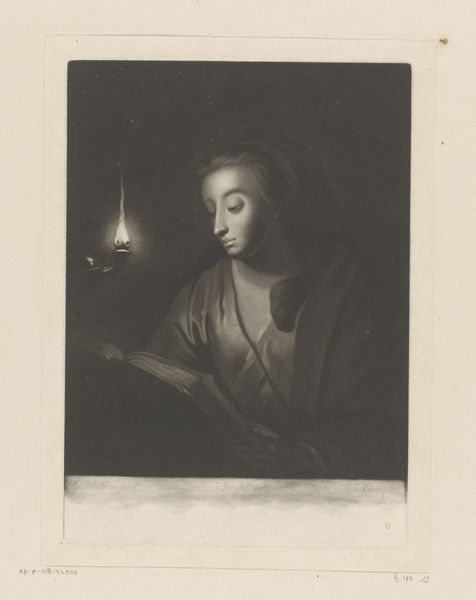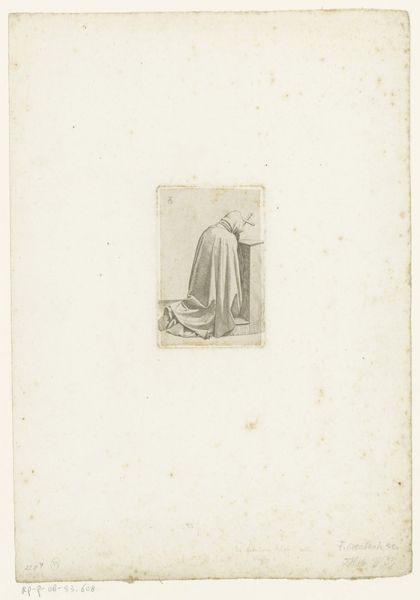
print, paper, engraving
#
portrait
# print
#
paper
#
romanticism
#
history-painting
#
engraving
#
monochrome
Dimensions: height 155 mm, width 83 mm
Copyright: Rijks Museum: Open Domain
This portrait of Martin Luther was made by Friedrich Wilhelm Meyer the First, presumably in the early 1800s. It’s an engraving: meaning, the image was incised into a metal plate, likely copper. The plate was then inked, and the image transferred to paper under great pressure. The success of an engraving depends on precise control and expert technique. Meyer would have needed a mastery of line, to convincingly render the face and robes of Luther. Notice how he varies the density of the lines to create a sense of light and shadow. This was exacting work, requiring years of training. Prints like this one played a vital role in the distribution of knowledge and ideas. This image of Luther would have circulated widely, helping to solidify his image as a reformer. This portrait stands as a testament to the power of craft to shape cultural and political discourse.
Comments
No comments
Be the first to comment and join the conversation on the ultimate creative platform.
